

















Jack Oliver President
Shadow Valley WT’s 304-288-4090 shadowvalleydeerfarm@yahoo.com
Mark Cobb
Secretary/Treasurer
Gobblers Ridge Exotics 304-532-4514 mark.cobb@gmail.com



















Jack Oliver President
Shadow Valley WT’s 304-288-4090 shadowvalleydeerfarm@yahoo.com
Mark Cobb
Secretary/Treasurer
Gobblers Ridge Exotics 304-532-4514 mark.cobb@gmail.com
Andi Manspile
S & J Whitetails 304-222-9914 amanspile@gmail.com
Melinda (MJ) Christy Vice-President Greenbrier Mountain WT’s 240-695-7730 greenbriermountain greenbriermountainwhitetails.com
Kenny Shoemaker Double K Farm 304-538-2219 doublekfarm1@yahoo.com
Debra Jett
Back To Our Roots Wildlife 304-553-5208 jettswildlife@gmail.com
Kerby Watson
Peaceful Valley Whitetails, LLC.
304-452-8787 kerbywatson71@yahoo.com
Brenda Strwderman
North Mountain Farms 304-703-5387 b_strawderman@yahoo.com
Bob Perrine
Mountain Clean WT’s
304-452-8689 bob@mountaincleanwhitetails.com




Just in time for semen sales, getting ready for breeding season!
We created this magazine in order for 2024 Breeder and Hunting Preserve advertisers to showcase their most recent photos of their bucks close to the last days of antler growth. We realize establishing a collective deadline for all states Fall magazines to publish on the same date to obtain last-minute photos would be impossible to achieve. With this magazine, advertisers have one more chance to showcase their bucks.
~ Thank you to all that participated!

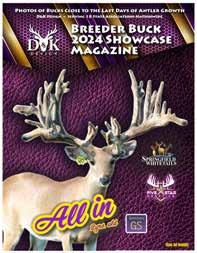
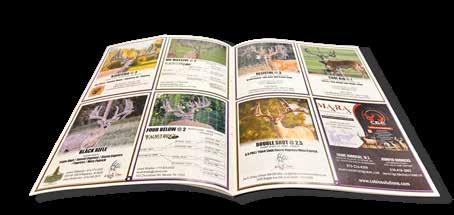
... if you would like to participate in our 2025 magazine, give us a call for more information. 320-905-2622 or 260-222-3478





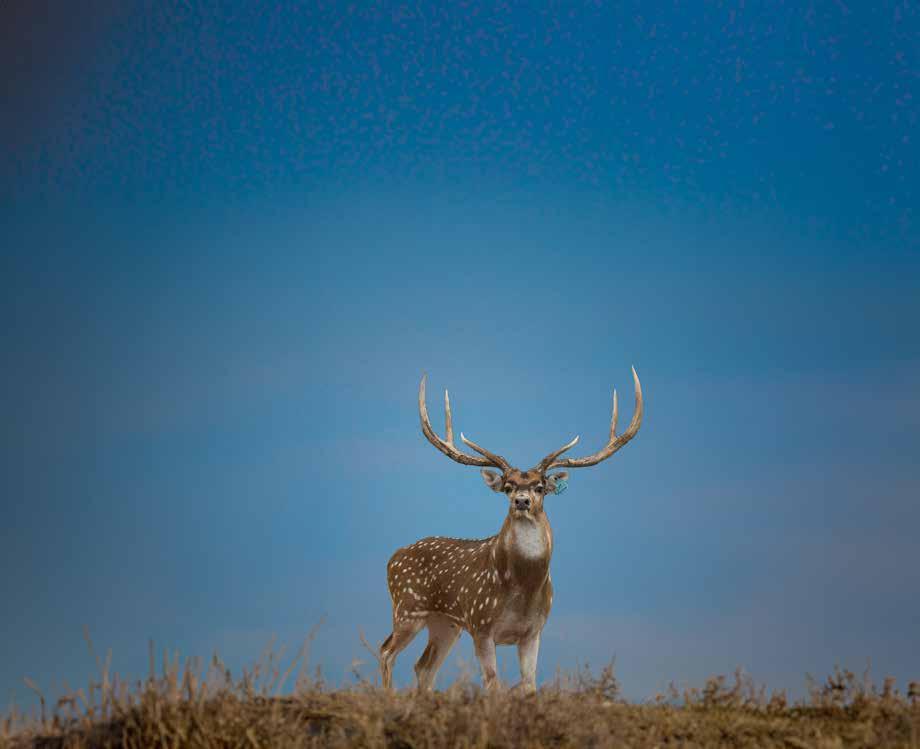


Disclaimer: The information contained in this advertisement is general in nature and is intended for use as an informational aid. It does not cover all possible uses, actions, precautions, side effects, or interactions of the medications shown, nor is the information intended as medical advice or for making an evaluation as to the risks and benefits of using a particular medication. You should consult with your veterinarian about diagnosis and treatment of any health problems. Information and statements have not been evaluated by the Food and Drug Administration (FDA), nor has the FDA approved the medications to diagnose, cure or prevent disease. Medications compounded by Mixlab are prepared at the direction of a veterinarian. Mixlab compounded veterinary preparations are not intended for use in food and food-producing animals. Mixlab does not recommend, endorse or make any representation about the efficacy, appropriateness or suitability of any specific dosing, products, procedures, treatments, services, opinions, veterinary care providers, or other information that may be contained in this advertisement. Mixlab is not responsible nor liable for any advice, course of treatment, diagnosis or any other information, services or products that you obtain through this advertisement.
New York Deer and Elk Farmers Association

Dave Vanderzee President Easton View Outfitters 518-210-8889 eastonviewoutfittersllc@gmail.com
Mike Kerry Four Season Whitetails 315-783-2848 fourseasonwhitetails@hotmail.com
Robert Root
Moriah Elk Farm 607-657-8069 rootnyelk@aol.com
Tim Rater
French Creek Whitetails 716-355-8870 timrater21@gmail.com
Mike Czora Prime Whitetails 585-330-9100 mike@primewhitetails.com
Tom Peryea 518-561-3555 tomselkranch@juno.com
Mike Rosenwie Concord Whitetail Scents 716-912-7314 rosey9473@hotmail.com
Wayne Hettenbaugh Valley View Whitetails NY 716-499-9367 whett6@hotmail.com
Dan Jennings JB Farms 413-822-1040 dan.jennings02@gmail.com
Winter 2024-25

“We have plenty of reasons to raise whitetails,” is what I told a fellow deer farmer I was talking with the first evening of the Northern Top 30 auction in Indiana. With record-breaking attendance and very strong prices, it was the best Top 30 I have ever attended in the 7 years I have been raising whitetails. It’s an exciting time to be a deer farmer.
I am also really looking forward to the NADEFA conference in March. I encourage everyone to attend at some point; you will not be disappointed.
On the NY side most of us are continuing as normal since the CWD positive case was found in the red stag farm. I genuinely feel sorry for the affected family; it must be absolutely devastating to experience.
Since Ag & Markets is still paying for testing resistance in our whitetails, there is no reason not to be breeding in that direction. For instance, you are trying to decide between two bucks: which one to keep as a breeder and which one to send as a stocker keep the more resistant one for breeding, or you get twin doe fawns, and you want to sell one of them wait till you get the results and sell the less resistant one, it’s that simple.
Your annual report must be completed and sent to DEC by March 31st. They will no longer send you a reminder; contact me if you need a form.
Mark your calendar for the NYDEFA summer picnic on August 2nd at my farm. We had a great event in 2024, and we are working on making the 2025 event even better. I am looking forward to seeing everyone again.
Have a happy, healthy winter; it will be fawning season before we know it.
Dana Hoover MountainSide Whitetails






If you would like your farm or business featured on our business card pages, email digital pdf file or scanned image (must be readable resolution) of your business card to the email address below.
This gives NYDEFA & WVDFA members a way to reach out to one another for services and to buy or sell deer! There will be limited pages for these card spreads, first come first serve. The overflow would be placed in the next issue and cards will be rotated each quarter.
NY Email to: dana@abcmailbox.net or call Dana at: 315-595-2202 WV Email to: mark.cobb@gmail.com or call Mark at: 304-532-4514





Greetings to All! Hope you all had a wonderful year of 2024 and wish you a successful year of 2025
We learned about deer farming thru friends by the name of Dana and Ella Hoover. They had started a farm of raising whitetail deer. Whitetail deer that sounded very interesting to me. So we payed a visit to their farm and questioned him about all the details of starting our own farm. Dana was very helpful in sharing a ton of tips and ideas.
I talked with brother-in-law, Neil Martin, and he was all excited and interested in this new adventure, and wanted to help me get started. With his help and my three brothers Kenny, Nevin, and Larry, we had the fence up in no time. We went around visiting multiple other deer farms. In January of 2020 we purchased our very first deer. Two fawns were brought home to our fenced in area. A couple months later we bought another adult doe from Southern Tier Whitetails and later that year we decided on purchasing a buck as well for live breeding. And have been live breeding since then. We have bottle raised a couple doe fawns per year since starting, and we use textured feed.





One of the most enjoyable parts of raising deer is watching the bucks grow out and in the spring checking what fawns I get. Last fall, thanks to Dana and the Association for the fall picnic, IT WAS A FUN DAY.
Shawn Schafer, John Ervin, Dave Vanderzee, and Dan Jennings to mention a few, were there an talked about CWD Resistance breeding and GEBV testing. So I got some insight on that which I’m very glad for. This year I plan to start with CWD and GEBV testing.
A special thanks to Mountain Side Whitetails for all the advice he has given me since starting. Also thanks to Neil and my three brother for helping with fence building, tagging, and anything I needed help with.
Lone Ridge Whitetails
Nate & Wilma Leinbach







By: Gail Veley • Sponsored by the North Dakota Deer Ranchers Association
There were ice cycles hanging from the eyelashes of Mike Elsberry on a recent December morning as he tended to his mule deer at Dakota Muleys in Emerado, North Dakota. The thermometer read 17 below zero. “Oh, it wasn’t that bad.” Elsberry said. “It’s the wind that makes it really bad. I never look at the windchill.”
Emerado, located right along the northeast border of North Dakota, is one of the coldest places in the U.S. during the winter and is home to Mike’s beloved 12-acre deer farm. North Dakota, named after the Dakota Sioux Indians, is a land amassed of great plains, badland, prairies, farmland and savannas. In the state whose nickname is the “Peace Garden State,” you need the ability to embrace winter as many days never get above zero.
While whitetails can thrive incredibly well in colder temperatures and seem as well to embrace it, Mike has put into practice a few measures in the five years he’s operated his farm, to make winter an easier time for his herd. In a place where the one of the coldest days on record was -56 degrees in 1906, Mike, 41, studied his land prior to putting up threesided shelters. “Our dominant wind is northwest,” he said. “Our pens are open to the south where the sun hits them and warms them up.”
While he believes shelters are necessary for his deer for the windbreak they provide, Mike also feels that deer who live in colder climates should have trees in their pens. “They will step under the
shelter, but they also prefer to lean up against trees for protection,” he said. “That’s what they would do naturally in the wild.” Along with shelters in colder climates, should be a sturdy fence that can withstand heavy winds and large snow drifts. “I know it cost me a little extra, but I put up ten-foot fences around my deer pens. You don’t want snow drifts that are so high the deer can get out. We almost thought it was going to happen one year,” Mike said, reflecting on a time when the snow drifts were nine and a half feet tall. Making the rounds on his 4066R John Deere tractor to clear and blow snow is a regular occurrence for him throughout the winter.
However, preparing your herd nutritionally for winter is perhaps above all the most important thing, and that begins during the summer months. “Deer naturally and instinctively will eat less during the winter, so they need to build up reserves beforehand,” he explained. “We feed vitamins and minerals year-round but put up more alfalfa in the fall. We also prepare big mesh bags of dried leaves in the fall and store them inside the barn.

During the winter we empty them into the deer’s feed bunk. They love it. You’d think it was the best treat they’ve ever had. We also include a grain mixture year-round of corn, roasted soybeans and sunflowers. I’m told sunflower seeds are a natural dewormer.”
Parasites, which can cause so many problems for deer farmers, are non-existent during North Dakota winters. “I never worry about losing a deer in the winter the way I do during other times of the year,” Mike said. And while Mike is diligent about maintaining a steady supply of drinkable water with Nelson heated water troughs sustained by an electrical system and water lines placed eight feet below the ground, he knows deer will eat snow if need be. “They will also take refuge in snowbanks and use them for windbreaks, in addition to shelters and trees,” he added. “We’ve basically got winter here down to a science. With a few pro-active measures in place, any deer farmer could get the hang of it. There’s room here for more industrious deer farmers and beautiful land for raising cervids.”

IF YOU HAVEN’T TRIED PNEU-DART’S RDD S , YOU’RE MISSING MORE THAN YOUR TARGET
Did you know impact trauma can negatively influence medical treatment? We do. Which is why we’ve spent 55+ years perfecting the ideal remote delivery device. Shorter in length and lightest on the market, our disposable RDDs, with patented Slo-Inject® technology, provide ultimate accuracy while reducing the potential for problematic hematomas.
Pneu-Dart. When you can’t afford to miss.®





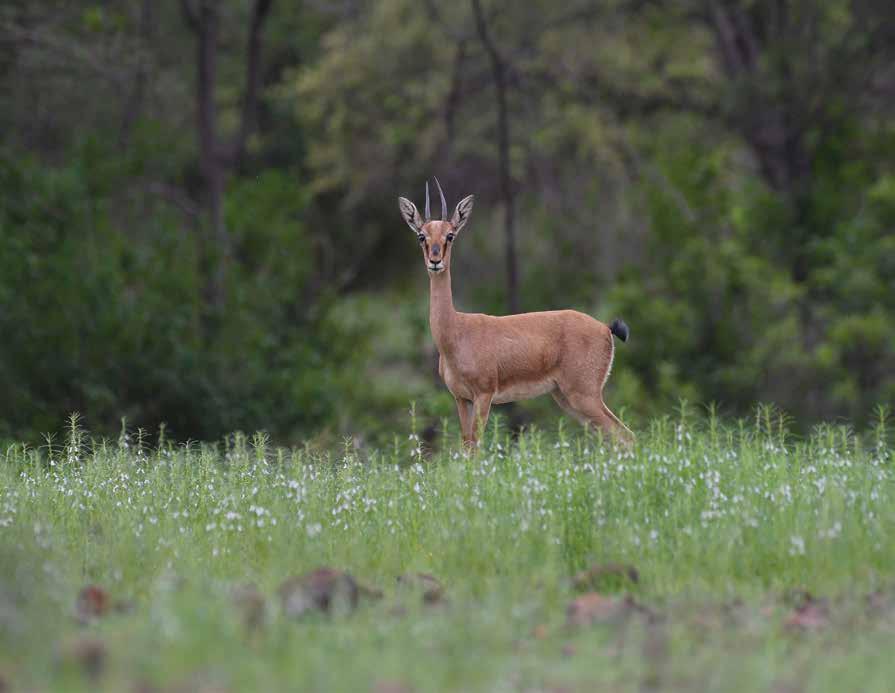

















• All-Milk Protein from Premium Food-Grade Milk Ingredients
• Essential Vitamins and Complex Minerals
• Balanced Fatty Acids
• Improves Digestion
• Promotes Growth and Performance
• Fawns up to 1 week of age: Feed 16 oz. of formula daily, divided into 4 – 6 feeding.
• Fawns 1 week to 1 month of age: Feed 24 to 30 oz. of formula daily, divided into 4 feedings.
• Fawns 1 month to 2 months of age: Feed 30 to 35 oz. of formula daily, divided into 2 to 3 feedings.
• Fawns 2 months to weaning: Gradually decrease formula and number of feedings to approximately 15 oz. of formula once daily until fawn is fully weaned at 12 to 14 weeks of age. Provide a weaning diet and fresh clean water to the fawn.
For oral use only. These feeding directions are guidelines. As each animal is an individual, the feeding rate may be increased or decreased according to the needs of the neonate.
Feeding directions for other species can be found on our website.

• No Refrigeration Needed
• Easily Palatable
• 18 Month Shelf Life
• Available in 20# & 8# pails
• 24/7 Technical Advice & Support
• Formula for other Exotics and Wildlife Available


1023 Route 146
Clifton Park, New York 12065
Phone: 1-518-383-2200 E-mail: nydefa@nydefa.org
All memberships renew in March.
Please send your check, payable to NYDEFA, to the address above.
Please check the appropriate box. If one is not checked, the “Do not publish” will be used
Name: __________________________________________________ Spouse/Partner:___________________________________________________ Farm/Firm:___________________________________________________________________________________________________________________
Address: ________________________________________________________________________ County:___________________________________
City: _____________________________________________________ State: _________________ Zip: ________________________________________
Business Ph.: (______) _______-___________ Home Ph.: (______) _______-___________ Fax:(______) _______E-mail*: ____________________________________________________ Website: _______________________________________________________
*Urgent updates are sent electronically, which allows us to expedite communication and decision making. Please provide.
Type(s) of cervid: ____
Type of Farm: Preserve/Scents/Breeding/Venison/Petting Zoo / Other: _____________________________
Veterinarian’s Name: _________________________________________________________ Phone:(______) _______-
Membership Level Cost Benefits
Active Member $50 Email notices, voting privileges, meeting minutes, and membership directory.
Friend of the Farmers $_______ Thoughtful donation. Additional contributions are greatly appreciated.
~ Thank you for your support! ~
Quarterly Newsletter
E-mail updates on timely issues
Northeast Cervid Marketing Cooperative Initiative
Numerous sales, marketing and networking opportunities
NY Farm bureau support, assistance and lobbying assistance

Date: ____________________________________ ____ New Member ____ 202_ Renewal
Primary Member Name: ___________________________________________________________________
Second Farm Member Name:_______________________________________(Family/Farm membership only) Farm Name:_____________________________________________________________________________
Address: _______________________________________________________________________________
City: _______________________________________ State: _________________Zip: _________________
Home Phone:___________________________________ Other Phone:
License#: _______________________________ E-mail: ______________________________________
What type of deer and/or services will you offer: __ Whitetail __ Elk __ Red Deer Other ___________ __ Scents __ Urine __ Antlers __ Venison __ Breeding Stock __ Shooters
Annual Membership Levels
___ Active WV Propagator (voting privileges) $75 ___ Family Membership (2 voting privileges) $100 ___ Associate Member (no voting privileges) $25 ___ Other ___________________________
Active WV Propagator is a proprietor, partnership, firm, corporation, division of an organization or individual actively engaged in whole or in substantial part, in the husbandry of domestic deer for commercial sale of venison or the breeding of stock to support such operations.
Family Membership, membership is same as Active WV Propagator but includes 2 voting privileges from the same household. This includes spouse, significant other, partner or child 18 years or older.
Associate Member is anyone who has an interest in cervid farming, but does not own deer. Associate Members do not vote and cannot hold office in the Association. They may attend all activities sponsored by the Association and they will receive the WVDFA Newsletter.
Other, Lifetime membership, sponsors, or representatives apply. I hereby make application to the West Virginia Deer Farmers Association, Inc. and certify that the information I have provided is true and correct to the best of my knowledge.
Would you approve sharing your information with other deer farms or folks interested in deer farming? ______

Make Checks/Payments payable to: WV Deer Farmers Association, Inc. C/O Mark Cobb, Secretary 215 Eastwood Road Ravenswood, WV 26164


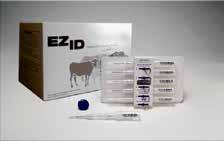














By: Gail Veley • Sponsored by the Iowa Whitetail Deer Association
Managing a deer herd has become abundantly easier through the introduction and availability of a new and improved GMS software program unveiled in April of 2024 by the North American Deer Registry (NADR). Originally created by fellow deer breeder Mike Owens in 2004 (and subsequently owned by NADeFA for several years) the GMS program was purchased by NADR in the fall of 2023. While the new system still essentially offers the same reliable features, it is now also mobile-friendly and web based which allows breeders to utilize technology, to create a more efficient process from sample submission to the receiving of results.
“We have around 75 users so far (and counting) that have purchased or migrated to the new software,” shared NADR Software and Support Specialist Sara Bohannon. “New GMS clients include both new and long-time breeders of whitetail deer and other cervid and exotic species. In addition, all existing GMS clients have been invited to demo and migrate to the new version. Like the original GMS system “this is a breeder’s personal and private database that can be used as sparingly or as abundantly as you’d like,” Bohannon added. “Conveniently, the new GMS system also allows for a much faster input of herd data, because of the immediate link to NADR. For existing NADR registered animals, you can import full lineage and
genetic data directly from NADR.”
It also offers the heavily requested “Dream Deer” feature which answers the question ‘What If?’ “It allows you to create a visual representation of a dreamsimulated pedigree. “Breeder feedback has confirmed this tool plays a crucial role in making good breeding decisions,” Bohannon said.
The new system also allows the user to transfer phone pictures into the appropriate GMS data section to display on lineages and track annual antler growth or other events. “You can also input animals from any pedigree source and build their own lineage page by assigning a sire and dam for each generation without depending specifically on NADR information,” Bohannon said. In addition, deer farm and preserve owners and their employees could all have congruent access, with their individual phones to this information through a single shared sign-on password. “We may add a feature in the future allowing for different levels of information sharing or limited rights to employees or others,” Bohannon explained.
Overall, the new system, the only one of its kind, allows for a more specific tracking of animals for the purpose of state reporting. “In every state that allows deer farming it’s crucial to have your records maintained properly and to be able to reconcile them as quickly and accurately as possible,” Bohannon said.
“NADR continues to work hard to provide the very best tools and the most valuable information in our GMS software program and genetic registry,” said NADR Executive Director Gary Cook. “We are ever continuing to seek ways to use technology to provide knowledge and state of the art services to our customers.” You may reach NADR staff by calling 405-513-7228, faxing them at 405-513-7238, sending an email to nadr@deerregistry. com or visiting their website at www:deerregistry.com. NADR is located at 1601 Medical Center Drive, Suite 1, Edmond, OK, 73034.
Herd Inventory -
Track all aspects of a herd, including tags, names, State I.D., birth weight, sires, dams, etc. Track pen assignments, display unlimited pictures and record medications of each animal.
Online submittal requests for DNA testing can be created with just a few clicks. When the specimen has been processed, retrieve the lineage and DNA information back into GMS.
GEBV/Codons -
Receive and store GEBV scores and Codon values from NADR for each animal.

Input Details here to simulate potential breeding outcomes. Create a visual representation of a dream pedigree including detail such as scores, genetic profile and custom comments. An estimated bloodline percentage calculation is displayed along with breeding history for both the sire and dam. Sire and dam pairings can be saved as good matches for future reference and reporting.
Lineage/Pedigree -
The fully interactive lineage screen displays lineage and pictures for each animal. Optionally, you can display the GEBV score.
Customizable field for each animal to record anchor doe detail to display on reports or grouping.
Create and assign as many pens or groups as desired. Pen and group detail included in inventory reports allows for sorting and reviewing animals by pen or group.
Several reports are available such as Herd Status, Removal History, Pen and Group reports, Medication History as well as Doe Line. A customizable Animal Search Report will filter and sort on any data fields associated with an animal. These reports can be printed or exported to excel or PDF.


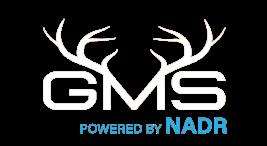
NADR has spent countless hours with people in the industry to develop a program that will work for all Cervid species as well as Exotics.
NADR will be rolling out more features in the coming year such as Animal Transfers, Customizable Reporting and Email Notification of updates.
Contact: gms@deerregistry wildlifemanagementsoftware.com


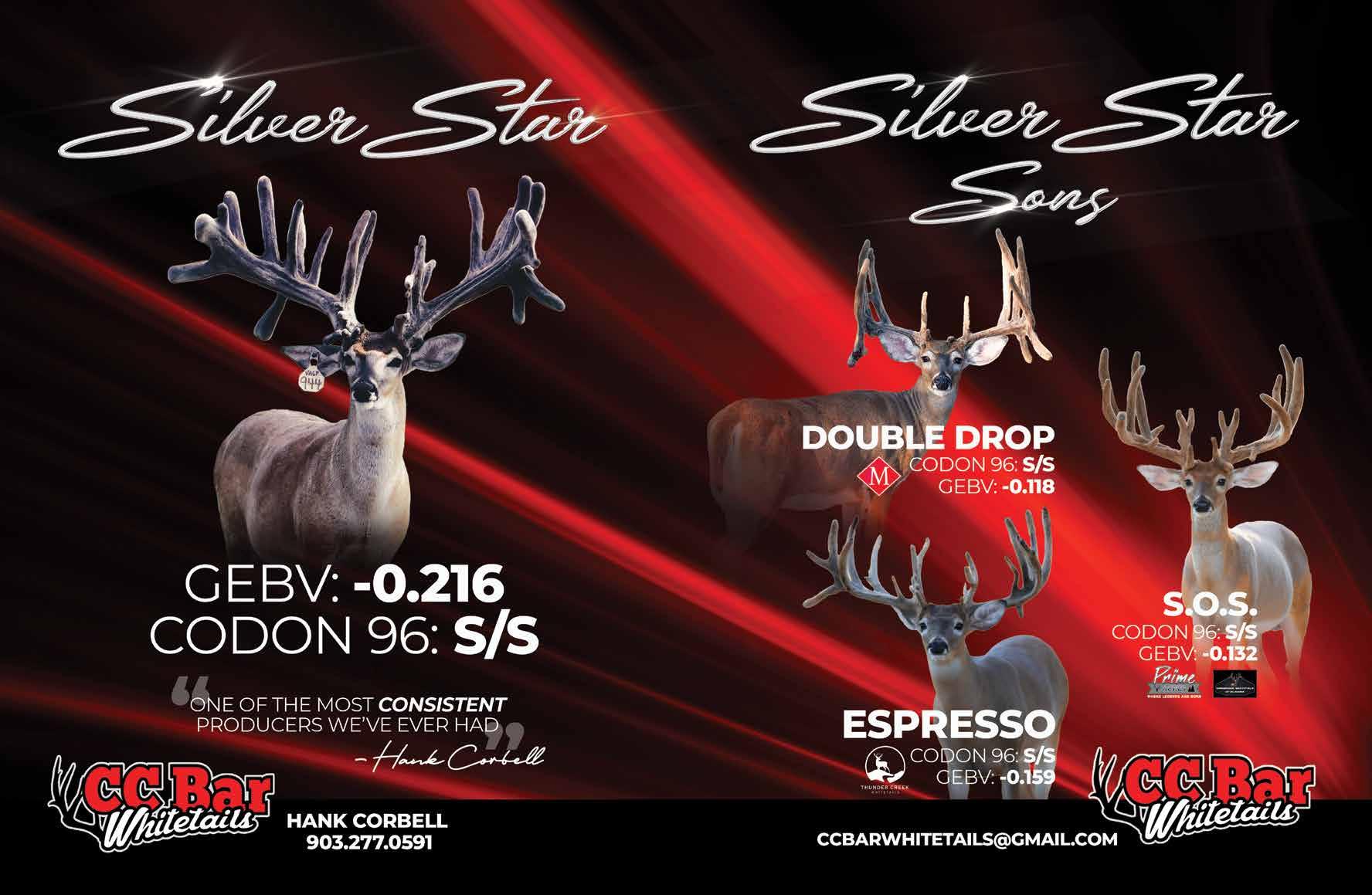





















GEBV:

The 2024 election is widely regarded as one of the most pivotal in modern history. Republicans have gained control of both the White House and the Senate, and have secured their majority in the House of Representatives. This marks the first unified Republican government since 2017. They plan to leverage President-elect Donald Trump’s unexpected and decisive victory to push through as many of their legislative priorities as possible before the 2026 midterm elections, where they will likely face a challenging fight to retain their congressional majorities.
On Tuesday, November 5, 2024, former President Donald Trump (R) and Ohio Senator JD Vance (R) defeated Vice President Kamala Harris (D) and Minnesota Governor Tim Walz (D) in the Presidential election, securing the 270 electoral votes required for victory, with the final tally being 312-226.
With all races called, Republicans will control the Senate with a 53-47 majority. Republicans gained control of the Senate by flipping seats in Ohio, Montana, Pennsylvania, and West Virginia. Although Democrats lost the majority, they retained key seats after several high-profile retirements in Maryland, Michigan, and Arizona. Additionally, as Sen. JD Vance (R-OH) will become Vice President and Sen. Marco Rubio (R-FL) is set to be the next Secretary of State, their respective Governors must appoint a replacement.
As of Friday, November 15, the House will have 59 new members, 30 freshman Republicans, and 29 freshman Democrats. House Republicans defended their majority with the current tally being 218-209. With 8 outstanding races,
these numbers are expected to change. On November 13, Rep. Matt Gaetz (R-FL) resigned from Congress, triggering a special election for his open seat.
President-elect Trump has voiced ambitious policies that are set to be enacted on Day 1 of his second term, especially with a Republican trifecta. These include:
President Trump is expected to quickly implement mass deportation of illegal immigrants, a key promise since his first term and during the campaign trail. The Trump administration will be seeking to undo Biden-era executive orders (EOs) that reversed some of his first-term policies such as the Remain in Mexico policy on asylum seekers and halting the flow of migrants
through the Darien Gap from South America, in which negotiations with Panama are needed. President Trump announced Tom Homan, his former Acting Immigration and Customs Enforcement (ICE) Director to be Border Czar and be in charge of the Southern border and has made Stephen Miller, an immigration hardliner, Deputy Chief of Staff for Policy. President Trump has also discussed invoking the Alien Enemies Act, a law from 1798 that allows the President to deport anyone who is not an American citizen and is from a country that the U.S. has “declared war” on matters of national security.
On his most recent campaign trail, President Trump promised to impose notably large tariffs; 20% on all foreign goods and 60% on Chinese goods. As President, he will be authorized to do so without Congressional consultation through a 1977 law that allows duties in cases of “unusual and extraordinary threat.”


Tariffs are expected to launch at varying times, targeting specific countries and goods. There is speculation that he may utilize the threat of tariffs as a point of negotiation with competitors. Though his position on the subject is clear, opinions within his administration may differ.
Taxes remain a key priority for President Trump as he looks to extend expiring provisions from the 2017 Tax Cuts and Jobs Act (TCJA). President Trump plans to extend all personal income tax cuts and further reduce the corporate tax rate, as well as lift the cap on State and Local Tax (SALT) deductions, which paid for the TCJA bill. Additionally, on the campaign trail, he promised to eliminate taxes on tips, overtime, and social security checks. Tax reform will require Congressional approval, and a Republican trifecta will aid President Trump as he pursues his tax proposals.
Congress has about five legislative session weeks remaining before the Christmas break, with several key policy issues to address in that time. Upon returning to Washington, lawmakers will face two critical pieces of legislation: the FY 2025 National Defense Authorization Act (NDAA), a government funding package, and an extension of the current Farm Bill. Amidst this looming uncertainty, CHCG will remain engaged and continue to advocate for support of NADeFA’s priorities in the coming 119th Congress.


This hearty Slow Cooker Venison Stew with mushrooms, chestnuts and cranberries is easy to make and totally delicious.
• 3 tbsp olive oil or as needed
• 2 lb (950g) venison cubed
• 1 large onion peeled and finely diced
• 1 ½ cups (200g) mushrooms sliced
• 3 garlic cloves minced
• 2 tsp brown sugar
• 1 tsp salt
• 1 tsp ground black pepper
• 2 tbsp tomato paste
• 1 tbsp cranberry sauce or redcurrant jelly
• 1 cup (120g) cooked chestnuts (optional)
• ½ cup (65g) fresh or frozen cranberries
• 1 cup (240 ml) red wine or ruby port
• ½ cup (120 ml) beef broth (stock cube is fine too)
• 2 tbsp Worcestershire sauce
• salt and pepper to season


1. Heat the oil in your slow cooker if it allows for searing or in a separate pan. Brown the meat over medium-high heat, in batches, until nicely browned. Use a slotted spoon to transfer to a bowl.
2. Add a splash more oil if needed and reduce the heat. Sauté the onion and mushrooms for 5-7 minutes, stirring, or until softened.
3. Stir in the garlic then the sugar, salt, pepper, tomato paste and cranberry sauce. (If you have been using a separate pan transfer everything to your slow cooker now).
4. Add the meat, chestnuts, cranberries, beef broth, wine and Worcester Sauce and stir to combine.
5. Cover and cook on HIGH for 4-5 hours or LOW for 7-8 hours or un til the venison is tender.
6. Check the seasoning and add salt and pepper if needed.
7. Serve over mashed potatoes sprinkled with fresh thyme.
Notes:
To cook in a Dutch Oven, follow the steps to brown and sauté on the hob. Double the amount of beef broth and red wine then transfer to the oven, preheated at 160°C (325°F), for 1 1/2 – 2 hours or until the venison is tender. Keep any leftovers in the fridge for up to three days or freeze for up to three months.




By: Gail Veley • Sponsored by the Southeast Trophy Deer Association
Blackened skies greet the horizon during an Indian summer day in Florida. A tropical storm is brewing over the Atlantic coast and predicted to make landfall. It’s still too soon to tell if this one will become a hurricane. However, Florida deer farmers can tell you it’s never too soon to prepare for what will more than likely be a storm with very high winds and heavy rainfall. “We may take the weather with a grain of salt,” said Mike Vizcaino of Osceola Whitetails in Pomona Park, Florida. “But if you’re not prepared it could be very, very costly.”
Preparedness for your deer herd comes in the form “of the same types of things that you would do for your own family,” shared Dr. Bill Leffler of 2 Base Down Farm in Morriston, Florida. Ample supplies of drinkable and usable water, food and medication are top of the list, followed by power generators (for potentially very long power outages) as well as fencing supplies for repairs.
Other forms of preparedness include how you choose to design your deer farm from the very start, knowing that flooding and high winds could be issues. While Vizcaino was most affected by Hurricane Debby earlier in 2024, a majority of the damage was caused by high winds and trees falling onto portions of the 4.5-mile fence surrounding his 450-acre preserve, not flooding. “We had long since removed trees from our fence line,” he said. “Fallen trees from Debby didn’t take my fences all the way down. You need to make sure you have a strong enough fence that it
can take a direct hit. I always keep a 330-foot roll of wire fencing on hand at all times, along with other normal fencing supplies like gripples that help with splicing wire, giving me the ability to make faster repairs.”
The ability to act quickly after a storm can be the difference between saving or losing your herd, Leffler said. This includes avoiding contaminated water. “This is why I don’t like ponds or have ponds in my pens,” Leffler said. “If you don’t have measures in place to handle flooding, it’s almost too late after the fact.” Inevitably, diseases such as EHD, blue tongue and pneumonia emerge within 10 to 12 days after a storm from standing water, creating the absolute necessity to make sure medications are on hand as deer can die very quickly once affected. Your feed supplies need to be adequately stocked as well, as making a trip to the feed store may not be possible. However, feed supplies can also be ruined by a storm, causing a very difficult and stressful situation.
“We’re fortunate to have our deer standing on hay fields that they can eat,” Leffler said. “Other farms are dirt and clay. The opportunity to build on or move your animals to higher ground can also be helpful, if you’re able to do it.” Another key component in saving your herd is the ability to let them out of their pens so that in the panic that ensues during a storm, fences within close proximity aren’t a hazard to them. “If you have the means to fence in your entire property, I recommend you do it,” Leffler said. “This way you can let them out of their pens if the need arises and have less chance of losing your animals.”
In addition, “after a storm you may need to bump up your feed because of the extra stress placed on your deer by adding a top dressing with minerals and protein to get through those trying times,” Leffler said. “A lot of people can miss the fact that their deer might need a little extra help and may also need extra vaccines long before a storm approaches. And lastly, breed the toughest deer you can, adding to the likelihood they can endure the harder times.”

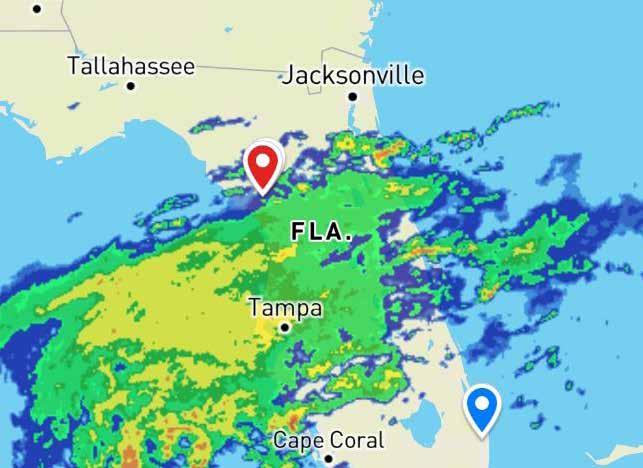



Nutrient rich formula contains highly bioavailable ingredients, including our proprietary calcium/phosphorous complex with Antler D TM, that are required to support body and bone growth, especially for fast growing bucks
Contains probiotics and targeted enzymes to support gut health and proper digestion
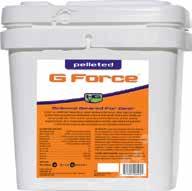
Available in pellet or powder that can be top dressed or mixed in feed. Great for antler growing season and young bucks, too
PRECISELY FORMULATED TO HELP MAINTAIN A NORMAL AND RELAXED DISPOSITION IN ALL CERVIDS
Provides optimal levels of magnesium, Vitamin B1 and inositol to promote calmness and provide help for restless animals
Contains no herbals, tryptophan or chemicals, eliminating concerns of unwanted side effects
Use PeaceMaker to “keep the peace” during pre-rut, rut, transportation, weaning and anytime destructive behavior may occur
POWERFUL SOLUTION FOR HEALTH & PRODUCTIVITY
Helps maintain digestive health and productivity
Contains micro-encapsulated probiotics, targeted enzymes and a novel fiber complex
Use in does before fawning, during lactation and all cervids during times of environmental stress

HELPS PRODUCE HEALTHY, FAST GROWING FAWNS
Helps maintain normal digestive health
Supports a healthy immune system
Feed powder for 14 days to bottle fed fawns
Paste is ideal for fawns left on does


ROBUST FAST RESPONSE FOR FAWNS & OLDER DEER
Innovative formula delivers max digestive support, especially in newborns
Rapidly delivers help for GI health and a functioning immune system
May also be used post-tranquilization to support healthy recovery



The rules for sudoku are simple:
A 9x9 square must be filled in with numbers from 1-9 with no repeated numbers in each line, horizontally or vertically.
To challenge you more, there are 3x3 squares marked out in the grid, and each of these squares can’t have any repeat numbers either.
Frost
Winter
Season
Evergreen
Frigid
Gourd
Pumpkin
Cornucopia
Autumn
Harvest
Nutmeg
Chestnuts
Cider
Caramel
Equinox



1. Log in with your email.
2. If you do not have a password, click “forgot password”.
3. If you have not paid for your 2024 dues, you will be prompted to make an online payment (or download invoice and mail in payment).

• PUBLICATION ADVERTISING
The income generated on advertising pays for publishing the quarterly magazines so that NYDEFA has next to little cost to get the news out to members.
• MEMBERS ONLY SECTION NYDEFA forums will be posted here soon along with other information that is private to members only. Stay informed, keep your membership in good standing to access this page.
• INDUSTRY RESOURCES
Quickly find contact information for organizations that you are in need of contacting.
• NEWS
- BOD messages quarterly
- National News Releases
- State News Updates
• YOUR NYDEFA BOD’S
• EVENT PHOTO GALLERY
• FACE BOOK LINK
• LATEST QUARTERLY MAGAZINE
• UPCOMING EVENT REGISTRATION AND DETAILS
• MEMBER BC PAGE • MAKE A MONETARY DONATION







Answers to puzzles will be available in the next issue, or can be found on our website: www.deersites.com Coloring pages can be mailed to “Samantha Uchytil, 19291 59th St NE, New London, MN 56273” or emailed to deerassociations@gmail.com for a chance to be featured in the next issue!





By: Gail Veley • Sponsored by the New York Deer and Elk Farmers Association
Understanding your end market and determining hunting ranch demand is perhaps the most important factor in your longevity as a deer farmer, offers Dave Vanderzee, President of The New York Deer and Elk Farmers Association. “I think whenever there is a learning curve, the most successful people can see things three plays ahead,” he said. “If you can determine or predict the trends in what hunters are demanding, you can be more ready to meet those demands.”
While the industry from its inception has always catered to producing clean and classical typical whitetails, nontypical whitetails began to take center stage in the early 2,000’s when ranches adopted Safari Club International scoring methods. “The farmer learned they were going to get paid by the inch,” Vanderzee explained. “And farmers wanted to add more mass based on SCI scores. They added lots of drop tines and started this quest to stray away from the typical frame. The buck Free Agent, a very large nontypical, was one of the first ‘blow up’ deer. You could breed pretty much anything to him and those deer would grow substantial mass. We were all encouraged to do this.”
Consequently, there was a massive production of ‘Christmas tree’
looking whitetails. “The farmers and hunters were quite happy with these very unique and different looking deer,” Vanderzee said. “Different from what they would ever see in the woods. Until, that is, the marketplace got saturated. All of a sudden, a deer magazine called ‘Typical’ was getting published alongside magazines about nontypicals. The average hunter came to realize this was the style that was coming off of hunting ranches. And a traditional hunting ranch patron may like one or two of them, but not a whole wall.”
As close to two decades of breeding nontypicals continued on, Vanderzee believes those deer farmers who actually never deviated from raising typical deer, actually came out ahead. “Like with any fashion or trend, it goes back to basics at some point,” he said. “The deer farmer was a victim of his own success. Everybody was producing bigger deer and even though they should get extra money for them, everybody had them. Additionally, bucks can really fight at that size and do a lot of damage. If you don’t sell them off by November 5th you’ve got a big problem.” As issues such as these became more at the forefront of production, the trend began to shift back to the look of a clean typical, Vanderzee added. However, several end market venues still exist for deer of all shapes and sizes
including disabled veteran’s hunts, children’s hunts or first-timers. “As things have changed the people that are still in it, are really in it, and have increased their herd size in response to catering to market trends. Having closed borders here is New York as well as in other states, we, like other farmers, have to export or grow our own making it a little more challenging.”
Nonetheless, adapting to changing trends while making a profit could come down to avoiding the Law of Diminishing Returns (which states that increasing a single factor of production while holding all other factors constant will eventually lead to a decrease in output) as well as practicing a few simple rules. “At a bare minimum join your state deer association and be known,” Vanderzee said. “Don’t be a secret. And form an alliance or relationship with local farmers or preserves where transport would be cheaper when it comes time to sell and ship deer. Pool resources with trailers. Rent or buy a timeshare or trade it for fencing or barter in some manner. These may be ways to increase your profit line or provide a financial cushion while you determine where your next steps lie with production.”


44 ISSUES FOR 1 YR.
Reaching out to over 2500 members (11 Publications x 4 quarters)
17 State Associations - Approx. 2500 readers
$189 / Issue ($8316. / Yr) ~ Full Page
$107 / Issue ($4708. / Yr.) ~ Half Page (55-59% Discount off single ad placement)

16 ISSUES FOR 1 YR.
(4 Publications of your choice x 4 quarters)
$220 / Issue ($3520. / Yr) ~ Full Page
$121 / Issue ($1936. / Yr.) ~ Half Page
(48-54% Discount off single ad placement)





TEXAS DEER ASSOCIATION MAGAZINES
4 ISSUES FOR 1 YR. (Can be added to Buckaneer or Doe-Re-Mi package)
Reaching out to over 800 TDA members (3 Tracks Publications & 1 Auction Catalog)
$428 / Issue ($1712. / Yr) ~ Full Page
$267/ Issue ($1068. / Yr.) ~ Half Page (55-59% Discount off single ad placement)
Single Issue In TDA Publications:


Two Page: $1500. One Page: $950 1/2 Page: $650









(Alabama) ADA (Indiana) IDEFA*** (Ohio) WDFO (Pennsylvania) PDFA*** (Louisiana) WOL*** (Michigan) UDFoM (Kentucky) KALA (Florida) SeTDA*** (New York) NYDEFA (West Virginia) WVDFA*** (Oklahoma) WOO*** (Kansas) KEDA (Missouri) MDA*** (Illinois) ILDFA (North Dakota) NDDRA (South Dakota) SDEBA*** (Minnesota) MDFA (Iowa) IWDA*** (Texas) TDA





$50. Assoc. Member
$50. Assoc. Member
$50. Assoc. Member
$75. Assoc. Member
$50. Assoc. Member
$50. Membership
$50. Assoc. Member
$50. Assoc. Member
$35. Assoc. Member
$25. Assoc. Member
$50. Assoc. Member
$25. Assoc. Member
$50. Assoc. Member
$25. Assoc. Member
$50. Assoc. Member
$25. Assoc. Member
$50. Assoc. Member
$50. Assoc. Member
$100. Membership



$100. Active Member
$50. Active Member
$100. Active Member
$100. Active Member
$100. Active Member
$100. Active Member
$100. Active Member
$50. Active Member
$75. Active Member
$100. Active Member
$50. Active Member







$1000. Lifetime Membership
$75. Membership w/ Spouse
$1000. Lifetime Membership
$1000. Lifetime Membership
$750. Lifetime Membership
$500 Lifetime Membership
$200. Membership w/ Spouse
$1000. Lifetime Membership
$100. Active Member Breeder
$50. Active Member
$75. Active Member
$50. Active Member
$75. Active Member
$100. Active Member
$100. Active Member Hunting Ranch
$500. Lifetime Membership
$500. Lifetime Membership
FREE E-member (TDA emails only) Total:
*** These states allow anyone that lives in their state and not raising deer but
Alabama
Illinois
Indiana
Iowa
Kansas
Kentucky
Minnesota
Missouri
New
North
Pennsylvania
South
Southeast
Texas
United
West
Whitetail
Whitetails
Whitetails






